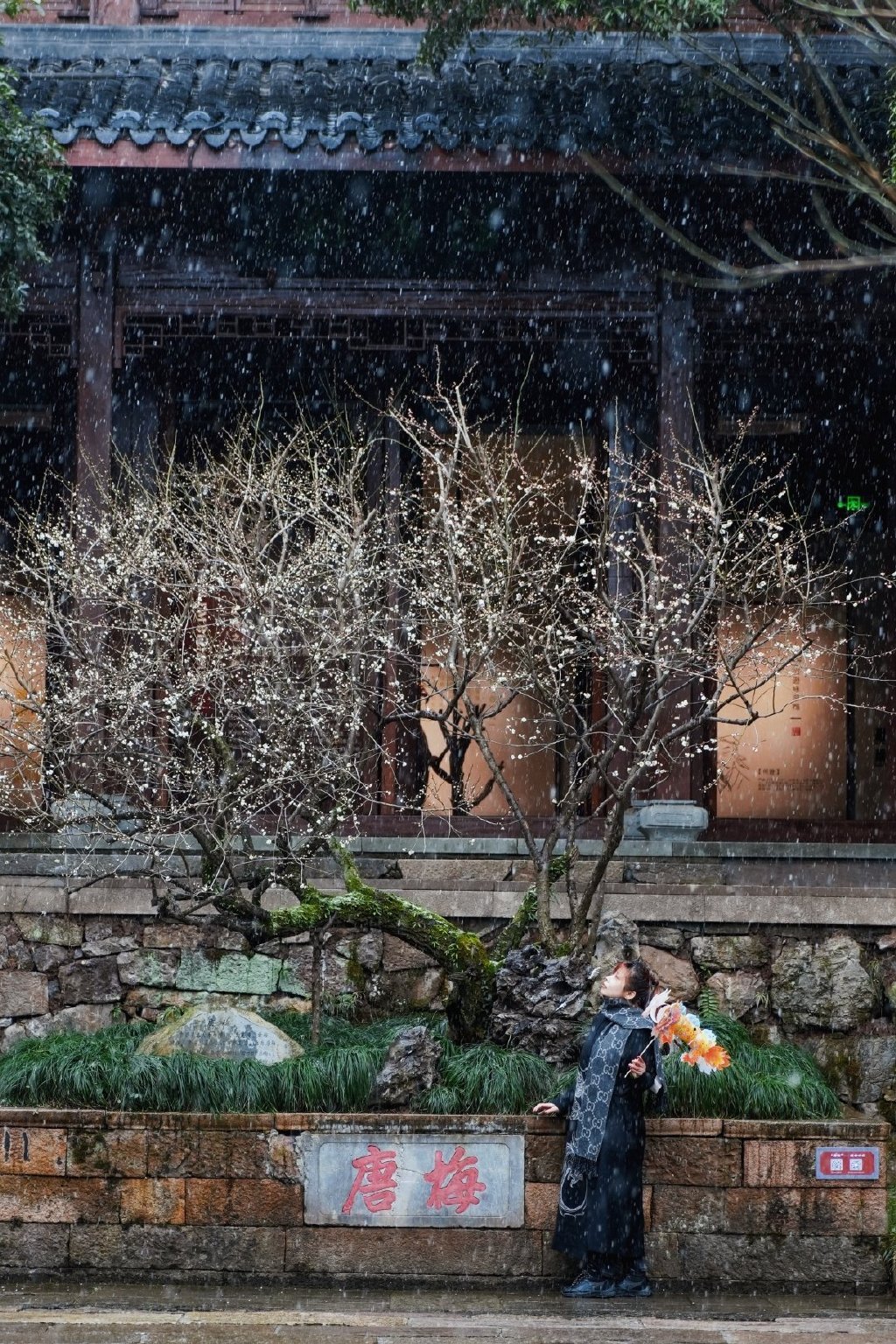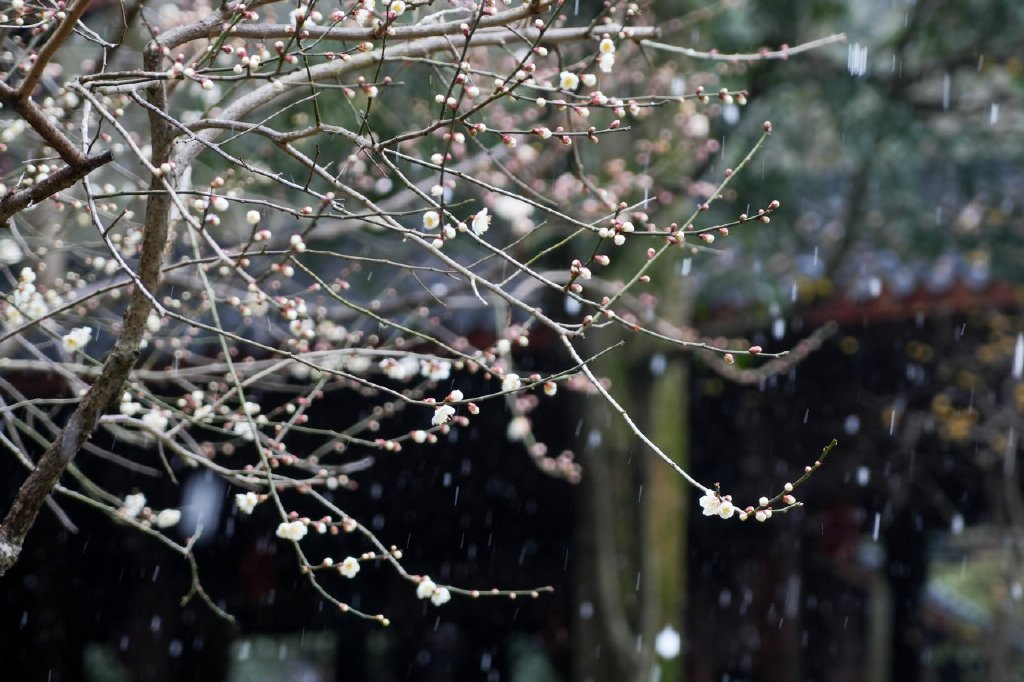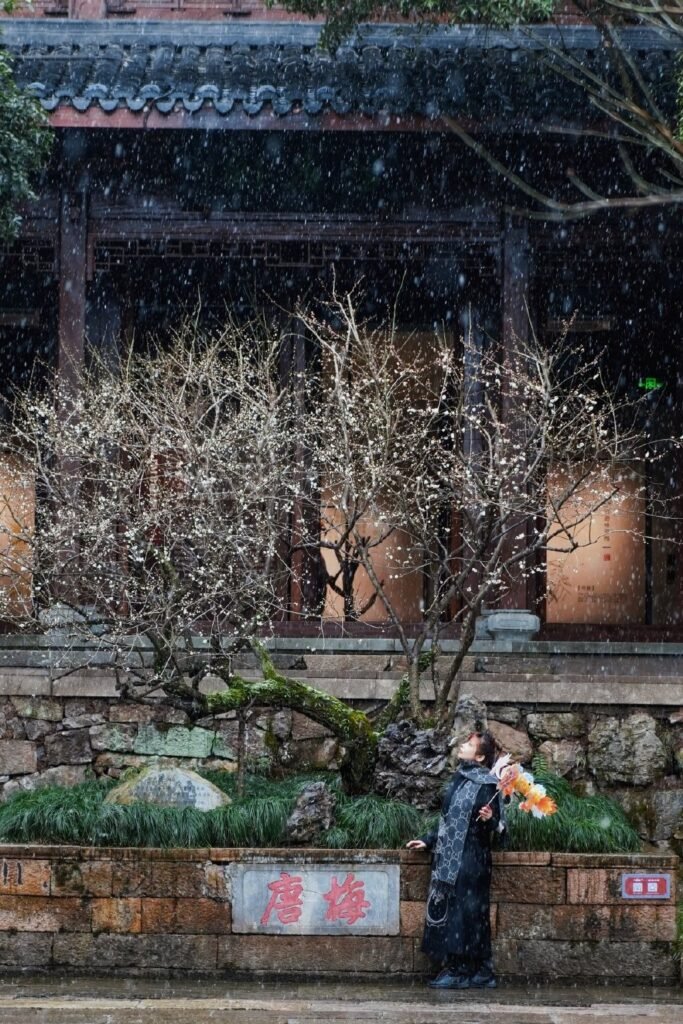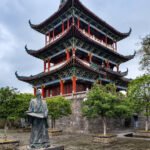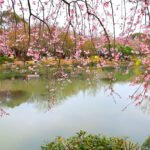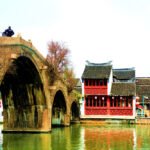The sparse shadows slant across the clear shallow water, the subtle fragrance drifts in the dusk of the moon. Lin Hejing’s poem has always been the pinnacle of plum blossom poetry. Reading it carefully and savoring it slowly, one can experience different feelings in different states of mind. Every February to March, I make it a point to admire the plum blossoms. This year, I visited the fragrant snow sea of Chao Mountain and the Tang Dynasty plums, and then strolled through the ancient town of Tangqi. Transportation: High-speed rail, get off at Hangzhou East Station or Linping South from Shanghai. Self-driving route from Shanghai to Chao Mountain Scenic Area: 1. Shanghai-Hangzhou Expressway – (Yuhang) turn to省道09 – Chao Mountain Scenic Area 2. National Highway 320 – (Tangqi Moganshan direction)省道09 – Chao Mountain Scenic Area. Chao Mountain is named for its transcendent and abrupt rise beyond Gaoting and Yellow Crane. Its plum blossoms are renowned for their ‘ancient, vast, and peculiar’ qualities. The plum blossoms of Chao Mountain typically bloom around the beginning of spring, around February each year. The plum trees are extremely thick and large, with branches sprawling in all directions. Often, a single area can have thousands of plum trees, and when they bloom, the buds burst forth, spreading white flowers like a layer of jade, reflecting white across the sky for miles, like flying snow filling the air, with petals scattered chaotically. Hence, it has the well-deserved reputation of ‘ten miles of fragrant snow sea’. On the day I went, it first snowed lightly, but after a while, it turned into heavy snow. This year has been quite interesting, with heavy snow in Jiande at the end of January and again in Linping at the beginning of February. I have been extremely fortunate. Seeking plum blossoms in the snow is a sentiment that can be encountered but not sought. When the plum blossoms are in full bloom, their fragrance seems to spread far beyond to the foot of Linping Mountain. If one climbs high to look into the distance, it is just like a sea of snow, and is one of the three major places in Jiangnan to seek plum blossoms. There are five ancient plums in China, and Chao Mountain has two of them – the Tang Dynasty plum and the Song Dynasty plum. The Tang Dynasty plum bloomed earlier than the Song Dynasty plum this year. The Tang Dynasty plum is as white as snow, while the Song Dynasty plum is as red as blood, each with its own unique charm. In front of the Song Dynasty plum pavilion, there is also a wintersweet, which is now in full bloom, extremely beautiful and fragrant. The renowned modern master of calligraphy, painting, and seal cutting, and the first president of the Xiling Seal Society, Mr. Wu Changshu, loved plum blossoms all his life, especially those of Chao Mountain. He not only left behind the immortal verse ‘Ten years without visiting the fragrant snow sea, the plum blossoms remember me and I remember the plums. When can I buy a boat to brave the snow and pour a cup in front of the flowers’, but also chose Chao Mountain as his final resting place, showing his deep affection for the plum blossoms of Chao Mountain. There is the Wu Changshu Memorial Hall, bonsai garden, and many other scenic spots here. You can also take a gondola to experience the beautiful scenery of the plum blossoms. Chao Mountain is only 6 kilometers away from Tangqi Town in Linping District, known as the land of fish and rice, the place of flowers and fruits, and the capital of silk. After visiting Chao Mountain, you can also stroll through the ancient town. There is also a Linping Tourism Distribution Center on the way, next to which there is an outlet for shopping. This is the transfer center of Linping, which is very convenient to go anywhere. The most important thing is that you can buy tickets at a 30% discount! It’s a great deal! Linping is famous for the verse by Shi Daoqian ‘The wind plays with the cattails, making them dance gently, the dragonflies cannot stand freely, on the road under the Linping Mountain in May, there are countless lotus flowers filling the sandbars’; while Tangqi Ancient Town is known for the hermit of the Southern Song Dynasty and the pastoral villas of the late Ming and early Qing Dynasties.
Historically adored by literati and poets, the mention of Tangqi evokes the image of loquats, instantly making one’s mouth water. On this visit, however, I was treated to the sight of the ancient town blanketed in snow, exuding a profound charm. Once acclaimed as ‘the foremost of the Top Ten Famous Towns in Jiangnan,’ the Guangji Bridge stands at the heart of the town, offering a panoramic view of the ancient scenery as one walks across. No matter where I go, I always make a point of visiting local shops to purchase some specialty products to take home, and Tangqi was no exception. Descending from the Guangji Bridge, one finds oneself in a bustling street, where the hours swiftly pass by as I stroll, shop, and make purchases. How could one not fall in love with such a scene in Chao Mountain and Tangqi?
